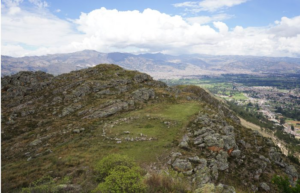Megalithic Stone circle Discovered in the Andes – older than the pyramids of Egypt
 Archaeologists from the University of Wyoming revealed the existence of a circular plaza in Peru older than the pyramids of Egypt, located in the archaeological site of Callacpuma, in the Cajamarca region of northern Peru.
Archaeologists from the University of Wyoming revealed the existence of a circular plaza in Peru older than the pyramids of Egypt, located in the archaeological site of Callacpuma, in the Cajamarca region of northern Peru.
The study, published in the scientific journal Science Advances, dates the construction of this structure to the Late Preceramic period, 4,750 years ago. It is a structure made up of large independent megalithic stones placed vertically. According to the authors of the research, an arrangement with similar characteristics had never been seen before in the Peruvian Andes.
It is also considered “one of the earliest examples of monumental, megalithic ceremonial architecture in the Americas.” In order to date the construction of the circular plaza, archaeologists proposed three radiocarbon dates “associated with the initial construction, which “which average to approximately 2750 calibrated years before the common era (cal BCE).”
Regarding the research work, the charcoal fragments from the foundations of the monumental stone walls that the archaeologists recovered were also key. These were found in a thin layer “of mixed soil, clay, gravels, and small charcoal fragments, laid directly upon bedrock where builders planned to erect stone walls,” the researchers explained.
 While no inscriptions describing the intended function of the ancient megalithic structure have been found at the site, the researchers say that they have retrieved many clues as to its purpose and origin.
While no inscriptions describing the intended function of the ancient megalithic structure have been found at the site, the researchers say that they have retrieved many clues as to its purpose and origin.
“It was probably a gathering place and ceremonial location for some of the earliest people living in this part of the Cajamarca Valley,” said archaeologist Jason Toohey. “These people were living a primarily hunting-and-gathering lifestyle and probably had only recently begun growing crops and domesticating animals,” he added.
The Callacpuma archaeological site is also renowned for its extraordinary cave paintings. These artworks, estimated to be approximately 15,000 years old, are unique in America and provide a fascinating glimpse into prehistoric times. The ancient creator of these paintings selected the depths of the caves as their canvas. This choice indicates to researchers that these locations held spiritual and religious importance.
Photo(s) Credit; Jason Tooley
Original Study Source: Scientific Journal Science Advances
